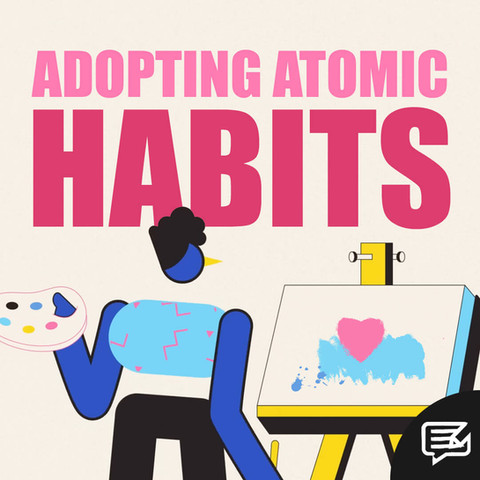
26.09.20
WHEN AI MEETS FAUNA & FLORA
When you think of an advert for Microsoft you might expect the “Now only £499” fodder from Currys PC World or the like.
But a couple of weeks ago, my curiosity was piqued by a very different type of TV spot: one providing an insight into Microsoft’s collaboration with the Snow Leopard Trust.



With the tagline “Microsoft AI: Empowering us all”, the 67-second overview explains how Artificial Intelligence is able to do in ten minutes what would take a human ten days. The Snow Leopard Trust website explains:
"Since snow leopards are notoriously difficult to spot and observe, we have to resort to technology to find out where these cats are and how their populations are doing. Camera trap surveys are one of the few scientifically sound methods to do so."
Equipped with heat and motion sensors, camera traps are triggered by any passing animal - goats, camels, horses… The trouble is, most systems cannot differentiate between species, resulting in researchers spending hour after hour scrolling through shots to catch a glimpse of the elusive “Ghost of the Mountain”. But a new AI solution from Microsoft aims to change this.
They have developed a machine learning model that can identify snow leopards and automatically classify hundreds of thousands of photos in a matter of minutes. Utilising deep neural networks, the model is designed to learn patterns in a similar way to how a human brain learns.
In time, it is hoped the technology can identify individual snow leopards based on their unique markings, affording researchers the opportunity to monitor the health of the ecosystem from afar.
Koustubh Sharma, from the Snow Leopard Trust, explains how AI could help transform the landscape of conservation:
"We have manually identified individual snow leopards in photos throughout the years, and have been able to come up with reliable population estimates and trends for a few habitat areas… But have a backlog of roughly 10,000 photos awaiting cat IDs. We hope that in good time, machine learning will alleviate the bottleneck, freeing up lots of time for us to invest in our conservation programs and leading to more precise data and better population estimates."
It’s a fascinating project, and one which highlights the amazing potential of machine learning for the benefit of the natural world.
It’s a tricky concept to get your head around - that man-made technology could benefit nature. Especially when we’re more familiar with the negative influences of man and his machines: deforestation, pollution, global warming - to name but a few. But there is hope, and this collaboration is just one example.
2030Vision is a multi-stakeholder partnership aiming to support the delivery of the UN’s Sustainable Development Goals by transforming the use of technology through a series of innovative, collaborative projects. One such project - led by Microsoft, Fauna & Flora International, SustainAbility and ARM - focuses on “How Digital Technology Can Advance Wildlife Conservation”.
According to WWF’s Living Planet Report, the natural world provides services worth around US$125 trillion a year. Yet humans have allowed populations of mammals, birds, fish, reptiles and amphibians to drop by 60% in just 50 years.
Take a moment to let that sink in. That’s 6 in 10.
It’s a shocking, eye-opening statistic that makes me pity future generations. The self-centred ignorance - arrogance, even - of our species has a lot to answer for. But – with the help of technologies including satellite transmitters, drones and acoustic monitoring devices - we’re starting to make up for it.
To mark the UN’s International Day for Biological Diversity, 2030Vision interviewed Stephanie O’Donnell – a Community Manager at WILDLABS, a conservation technology network. When asked what conservation projects she is most excited about, O’Donnell chose Audiomoth:
"The Audiomoth is a new acoustic monitoring device developed at Southampton and Oxford Universities that can record uncompressed audio at 384,000 samples per second and is the size of a credit card...
"A year ago if you wanted to listen for a species you'd have to pay around $800 for a single recorder. Now though, individual community members who need 10 or 100 recorders each, are coming together through WILDLABS and putting in a group order – and this means they are able to buy devices for $50 or less. Also, because Audiomoth is employing an open source design, the developers can take advantage of this same active community and continue to develop the technology including fixing any bugs.
"Access to this device is giving us so much data and so much capacity to monitor species that we just didn’t have before. I’m involved in a lot of conversations around open source technology and for me, this area – where you have collaborative business models enabling the development of bespoke hardware options – is really interesting."
I couldn’t agree more. Having served on the Board of Directors for the Drupal Association, I could talk for days (even months!) about the amazing benefits of open source technologies. To hear how it has been embraced in this way - for the good of the natural world - is truly inspiring.
O’Donnell also points to Google’s AI for Social Good initiative as a source of positive, proactive change:
"Google’s AI for Social Good initiative includes a partnership with the Zoological Society of London to track endangered species. With machine learning we are starting to make tools accessible that are so alien to conservationists in the field that they are like magic."
In a similar vein to Microsoft’s project, ZSL have teamed up with Google to speed up the identification process by harnessing the processing power of computers to do the hard work – and not just for Snow Leopards. But there are still significant challenges to overcome:
"Expert knowledge is currently needed to train and test machine learning algorithms, which can be complex and time-consuming. These methods also depend on having a large number of training images that have already been identified manually, and data must be prepared in a specific way for the algorithms to work (for example, cropping images around the animals present in the images). These represent significant barriers for conservationists and researchers working in the field, stopping the broader uptake of these methods"
Thankfully, it sounds like it’s only a matter of time before these issues are rectified:
"ZSL is working with Google to aggregate vast data archives, test specific species recognition models and refine machine learning algorithms, to be easily applied to our field work.
"This collaboration has included the development of Cloud Auto ML Vision, which aims to democratise AI by allowing organisations and individuals with limited machine learning expertise [to] train image recognition models for their own use cases… Our ultimate goal is to help create a tool that can be easily used by any conservationist who has collected large amounts of images, so they can train a model specific to their region of study and apply this model to assist them in classifying their images."
It’s not just animals that will benefit from the advancements in Artificial Intelligence, either. Projects are underway around the globe mapping forests, auto-identifying plant species and bridging the gap between maritime expertise and data.
You could easily lose yourself down an internet rabbit hole or two exploring all the new and exciting ways that technology can save the planet. You might even end up feeling as inspired for change as I do. Whichever field you’re interested in, one thing is for sure: AI gives us more time. And God knows we need it!

























































